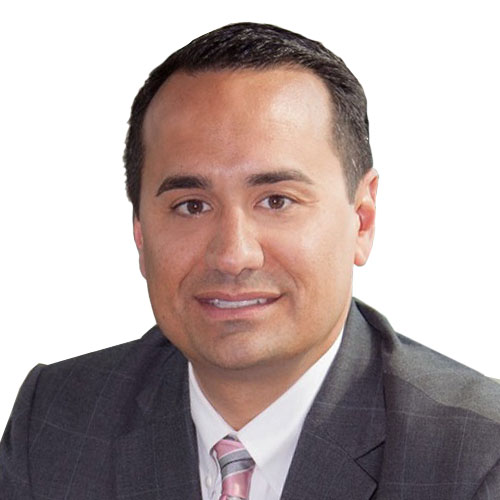Editor’s Note: The following post, the first of a two-blog series, is adapted from IntegriChain’s 2022 Access Insights Conference panel session: Best Practices: Pre-Launch to Launch to Post-Launch Optimization featuring Jason Noto, VP, Market Access, AVEO Oncology; Amy Winnen, VP, Head of Value, Access and Policy, Fulcrum Therapeutics, Inc.; and John Bardi, SVP Market Access, Policy & Government Affairs, Intra-Cellular Therapies.
The views and opinions of the panelists are their own and should not be attributed to their employer. Responses have been edited for clarity. The panel was moderated by IntegriChain Executive Director of Operational Consulting Rupal Patel.
Commercialization is a critical process for any pharmaceutical manufacturer, with alignment of multiple work streams that span across market access and brand teams as well as finance and the c-suite. We asked three market access leaders with significant launch experience across varying therapeutic categories about their launch journey–from pre-launch strategy and planning to post-launch optimization.



Patel: What advice do you have for manufacturers as they are planning for pre- and post-launch?
Noto: In some product categories – especially those with many products already in-market – there are not always significant therapeutic differentiators, but we can focus on nonclinical differentiators. Traditionally, when you think about market access, you don’t think about differentiation. You can set up a market access function, distribution network contracting strategy, and patient services programs that are differentiated for patients.
We started by examining the competitive set: what their network looks like and what their contracting strategy looks like. We wanted to stand out, so we put together a limited network of non-PBM-owned specialty pharmacies, which has significant benefits downstream specifically for our product – an oral oncology utilized primarily in community oncology settings. We thought about what we could do for community practices that could help address some of the challenges that they have.
Lastly, with our patient services program, we wanted to stand out and be personal there as well. After all, it’s people we are trying to serve – that’s our driving force. When we rolled out our patient services program internally, I had a picture of my parents in my presentation. They are in their early seventies, they’ve done the right things, and they’ve saved for retirement. I don’t want my parents or anyone’s parents or family members to deal with the financial toxicity associated with oral chemotherapies. With these faces in mind, we put together the most generous program in our category to differentiate ourselves.
Post-launch, I advocated for hand-holding on government pricing, gross-to-net optimization, as well as management, forecasting, and contracting by experts like IntegriChain. This is not just for me but for the team. These are very complex areas. We’ve had wonderful resources to help us develop an optimal pharma market access strategy, and even today we’re continuing to refine it.
Bardi: Coming from Big Pharma to help a biopharmaceutical establish a commercial organization was the most rewarding career move. This new experience was quite rewarding in that I didn’t realize how little I knew regarding all the necessary elements that set the foundation for a commercial pharmaceutical operation. For those of you who have gone from the big executive roles in Big Pharma to transitioning to an emerging biopharmaceutical company, the differences and requirements for leadership couldn’t be more different. As leaders in small biotech, you essentially are starting your commercial operations from scratch.
My first bit of advice: check your ego at the door and recognize that you really don’t appreciate all the work that goes into setting up a commercial pharma operation. In Big Pharma, the pieces, the systems, the policies, and the procedures were all in place for us, and as such we were just able to plug ourselves in and go. From the beginning in this new smaller company, I had to put together the recipe for what we needed to have in place to support our first FDA approved product before the bells and whistles of marketing and sales could even come out the blocks. For example, the operational table needs to be set – getting the supply chain ready to go, a price set, coordinating reimbursement needs, etc. – because the day that your salesforce hits the street, when those marketing tactics roll out, you must have all the pieces to operationalize the business and start recording scripts, sales, and so forth. There is no room for error in getting ready.
Patel: What market access challenges and focus areas do you need to consider across different product archetypes?
Bardi: Three things that are very, very important and define your product: your label, your price, and your payer mix. When you think about market access and how things unfold in your planning, all roads ultimately gravitate to what you expect that payer mix looks like. Beyond the label and price, the payer mix sets the priorities for the channels you will prioritize your launch focus on.
You need to understand where your mix starting point is and how it will evolve over the lifecycle of your brand. From this, your payer channels and targets will be prioritized and resources aligned accordingly. Always keep an eye to the future product indications as your payer mix changes will require adjustments to your initial pharma market access launch strategies and gross-to-net planning. How your payer mix changes and evolves will determine how effective you have been in establishing your gross-to-net assumptions.
Noto: Payer mix is obviously incredibly important. As a small biotech, the distribution network has been incredible in terms of differentiation. The one thing we did well in addition to creating a limited network of non PBM-owned specialty pharmacies is that we partnered with specialty pharmacies that were similar in size. While still larger than us, they could appreciate the mission that we have as a small biotech with limited resources and the importance of every single script fill and making sure we’re exceeding our KPIs for time-to-fill and related metrics.
I worked at Big Pharma for seven years and I think when you’re there you’re on the A team, you get A team attention from payers. But when those A team players leave and go to biotechs, they’re looked at as less important because of the budget that’s associated with them and those small startups. So I think it’s really important to ensure that you’re getting like-minded partners across your entire distribution network.
Winnen: It’s also critical to examine how your product will be used by patients and healthcare providers. This impacts patient affordability and provider reimbursement. I think this is especially critical with infused products. Where is the product going to be given? Is it going to be administered in a physician office, a standalone infusion center, or in a hospital? If it is in the hospital, what setting: outpatient clinic, an inpatient visit, or an observational care unit? These are very different reimbursement mechanisms requiring different billing and coding that market access field teams will need to understand. The patient out-of-pocket might also vary from each setting. The payer mix implications are also very important as they relate to the site of care. For example, if it’s a heavy Medicaid product, are some states going to mandate that all the infusions are bought through a specialty pharmacy and white bagged or brown bagged to the institution? Is a payer going to mandate a specific site of care? Another rapidly growing site of care partially due to the COVID pandemic is the home where reimbursement could be considered medical or pharmacy benefit depending on formulary design and who is administering the product. After understanding the various sites of care to be utilized with their respective reimbursement mechanisms, one needs to focus on patient compliance and adherence to help inform the support programs and tools needed to ensure patients receive and stay on medications.
We thank John Bardi, Jason Noto, and Amy Winnen for their participation on our conference panel and their agreement to share their expertise in this blog series.
Be sure to watch for the second part of this discussion in which our experts focus on overcoming channel challenges, operational effectiveness for gross-to-net, and their take on the longer-term impact of the Inflation Reduction Act.








